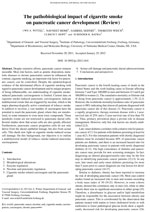Ausgewählte Publikationen
Wissenschaftliche Aktivität ist der Schlüssel zu Innovation und Fortschritt. Wir beschäftigen uns nicht nur klinisch sondern auch wissenschaftlich mit entscheidenden Fragestellungen rund um das Pankreaskarzinom. Auf diesen Seiten finden Sie eine Auswahl von entscheidenden Artikeln, die das Zentrum in den letzten Jahren veröffentlicht hat.
Publikationen aus dem Jahr 2017

Survival outcome and prognostic factors after pancreatoduodenectomy for distal bile duct carcinoma: a retrospective multicenter study
Purpose:
Pancreatoduodenectomy is the most common operative procedure performed for
distal bile duct carcinoma. Data on outcome after surgery for this rare
malignancy is scarce, especially from western countries. The purpose of this
study is to explore the prognostic factors and outcome after
pancreatoduodenectomy for distal bile duct carcinoma.
Methods: Patients receiving
pancreatoduodenectomy for distal bile duct carcinoma were identified from
institutional databases of five German and one Russian academic centers for pancreatic
surgery. Univariable and multivariable general linear model, Kaplan-Meier
method, and Cox regression were used to identify prognostic factors for
postoperative mortality and overall survival.
Results: N = 228 patients
operated from 1994 to 2015 were included. Reoperation (OR 5.38, 95%CI
1.51–19.22, p = 0.010), grade B/C postpancreatectomy hemorrhage (OR 3.73, 95%CI
1.13–12.35, p = 0.031), grade B/C postoperative pancreatic fistula (OR 4.29,
95%CI 1.25–14.72, p = 0.038), and advanced age (OR 4.00, 95%CI 1.12–14.03, p =
0.033) were independent risk factors for in-hospital mortality in multivariable
analysis. Median survival was 29 months, 5-year survival 27%. Positive
resection margin (HR 2.07, 95%CI 1.29–3.33, p = 0.003), high tumor grade (HR
1.71, 95%CI 1.13–2.58, p = 0.010), lymph node (HR 1.68, 95%CI 1.13–

Stereotactic body radiotherapy (SBRT) in recurrent or oligometastatic pancreatic cancer : A toxicity review of simultaneous integrated protection (SIP) versus conventional SBRT
BACKGROUND: Stereotactic body radiotherapy (SBRT) in pancreatic cancer can be limited by its proximity to organs at risk (OAR). In this analysis, we evaluated the toxicity and efficacy of two different treatment approaches in patients with locally recurrent or oligometastatic pancreatic cancer.
MATERIALS AND METHODS: According to the prescription method, patients were divided in two cohorts (C1 and C2). The planning target volume (PTV) was created through a 4 mm expansion of the internal target volume. In C2, a subvolume was additionally created, a simultaneous integrated protection (SIP), which is the overlap of the PTV with the planning risk volume of an OAR to which we prescribed a reduced dose.
RESULTS: In all, 18 patients were treated (7 with local recurrences, 9 for oligometastases, 2 for both). Twelve of 23 lesions were treated without SIP (C1) and 11 with SIP (C2). The median follow-up was 12.8 months. Median overall survival (OS) was 13.2 (95% confidence interval [CI] 9.8-14.6) months. The OS rates at 6 and 12 months were 87 and 58%, respectively. Freedom from local progression for combined cohorts at 6 and 12 months was 93 and 67% (95% CI 15-36), respectively. Local control was not statistically different between the two groups. One patient in C2 experienced grade ≥3 acute toxicities and 1 patient in C1 experienced a grade ≥3 late toxicity.
CONCLUSION: The SIP approach is a useful prescription method for abdominal SBRT with a favorable toxicity profile which does not compromise local control and overall survival despite dose sacrifices in small subvolumes.
Neuer LinkWissenschaftliche Veröffentlichungen

An dieser Stelle möchten wir Sie einladen sich einen Überblick über unsere wissenschaftliche Forschung zu verschaffen. Hierzu stellen wir Ihnen entscheidende Artikel des jeweiligen Jahres zur Verfügung.
